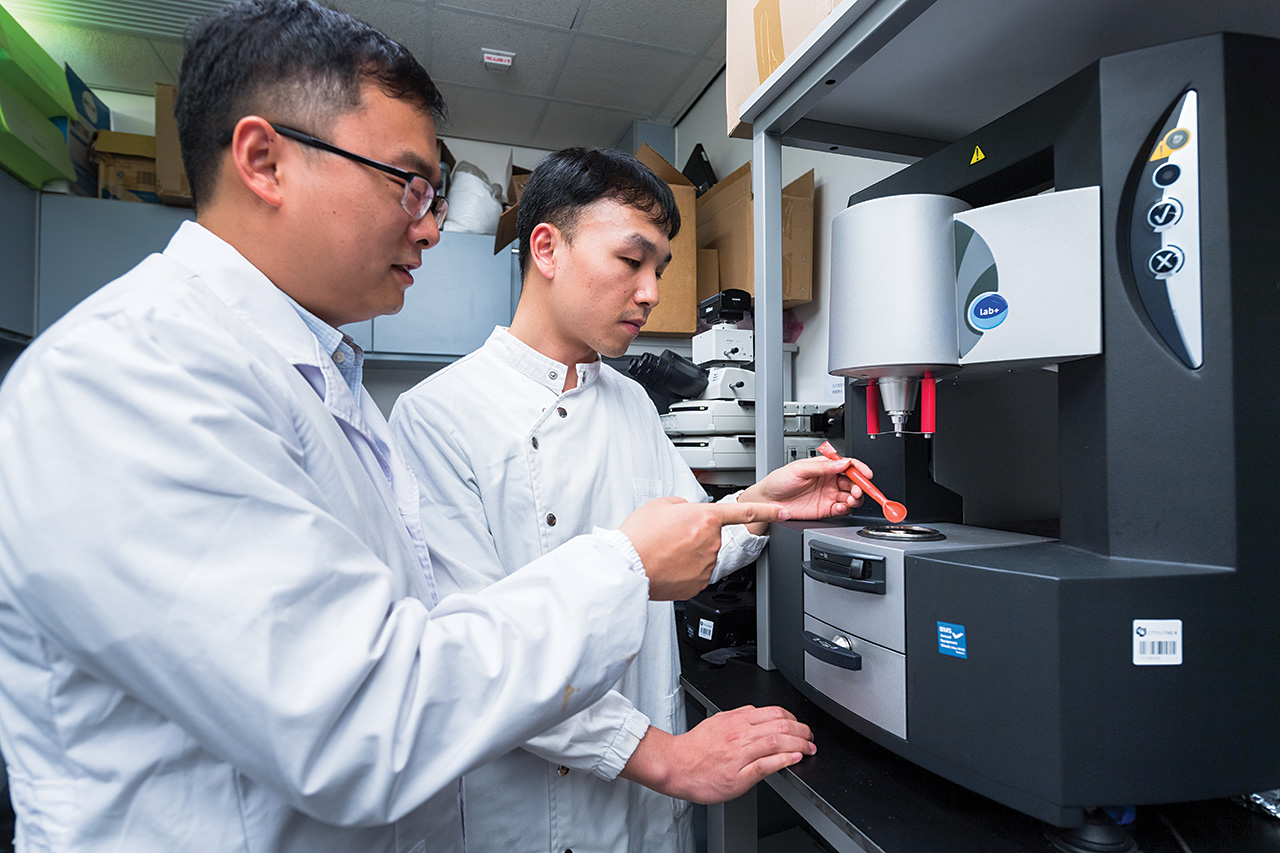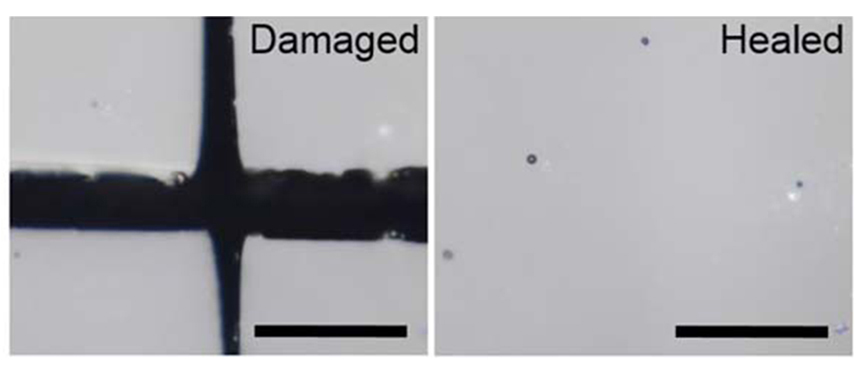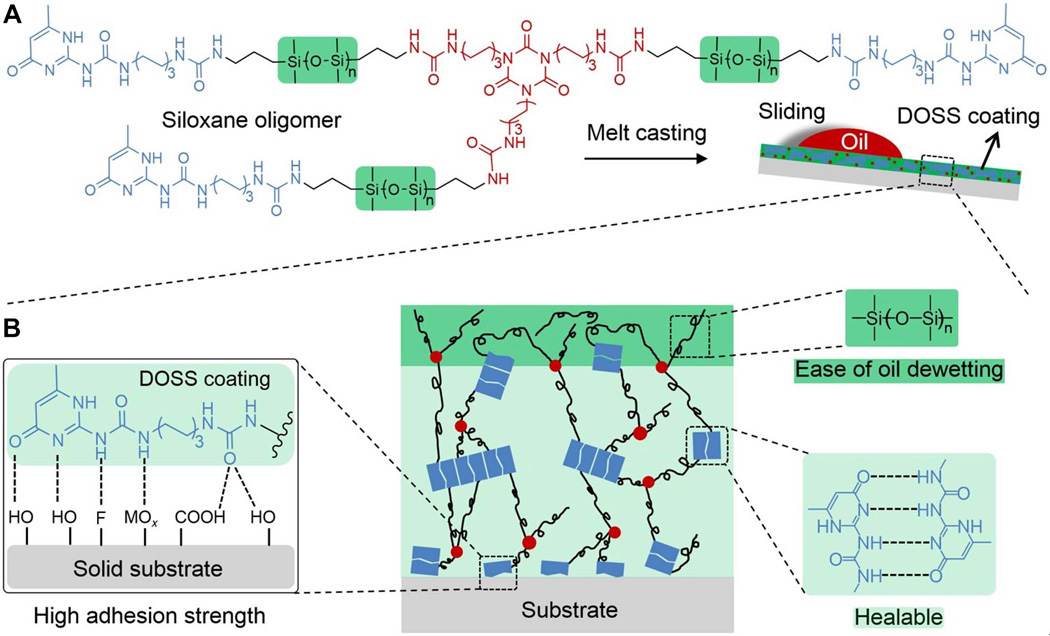
New anti-smudge coating protects and heals
By : Michelle Liu
Interest is growing in the world-first self-healable anti-smudge coating developed by a CityU research team. This discovery could lead to production costs 80% lower than for existing anti-smudge coatings.
 Dr Yao Xi (left) and his team have developed a self-healable anti-smudge coating that can enhance the durability of, for example, medical and aerospace equipment. Dr Yao Xi, Associate Professor in the Department of Biomedical Sciences, and his research team spent nearly three years developing the project, titled “Damage-healable Anti-smudge Coating”.
Dr Yao Xi (left) and his team have developed a self-healable anti-smudge coating that can enhance the durability of, for example, medical and aerospace equipment. Dr Yao Xi, Associate Professor in the Department of Biomedical Sciences, and his research team spent nearly three years developing the project, titled “Damage-healable Anti-smudge Coating”.
The new CityU coating has high optical transparency and mechanical strength, enhanced oil sliding and good interfacial adhesion. Sticking firmly to the base of various materials including paper, aluminium, copper and plastics, it offers protection and rapidly heals after damage or mechanical defects.
The breakthrough is significant because anti-smudge coatings play an important role in a range of industries. They can be applied to medical equipment, automobiles and electronic products to provide protection and repel liquids.
 The new self-healable anti-smudge coating damaged with a cut (left) can repair after a period of time has elapsed (right). Self-healable materials, as smart materials, are mainly used for conductive, electronic packaging, and scratch-resistant coatings. In particular, they are used for equipment and devices used in industries that require high levels of maintenance such as aviation, aerospace and maritime, and are usually used in medical equipment and robots.
The new self-healable anti-smudge coating damaged with a cut (left) can repair after a period of time has elapsed (right). Self-healable materials, as smart materials, are mainly used for conductive, electronic packaging, and scratch-resistant coatings. In particular, they are used for equipment and devices used in industries that require high levels of maintenance such as aviation, aerospace and maritime, and are usually used in medical equipment and robots.
However, so far no self-healable technologies or products with anti-smudge features are available on the market. “Our material is particularly suitable for situations that are sensitive to minor mechanical damages, and consequently can extend the life span of materials or equipment,” Dr Yao says.
For example, bacteria can easily stick to the surfaces of flexible medical catheters such as endoscopic and hemodialysis catheters. Microcracks may rupture blood vessels or lead to the infiltration of foreign objects into the bloodstream, which can lead to clotting and a higher risk of surgery. “Self-healable anti-smudge coating can effectively prevent these phenomena from happening,” he says.
Existing anti-smudge coatings conventionally rely on materials containing fluorine compounds that are expensive. The production cost of such coatings is around US$2,000 to US$3,000 per kilogramme.
“Compared with conventional anti-smudge coatings, our newly-developed polymer has a lower production cost, around US$300 per kilogramme, as it is made of fluorine-free organic silicone. Also, it surpasses existing self-healable materials by having the capabilities of resistance to oil stains and is easy to clean,” Dr Yao says.
The project received HK$1.3 million from the Hong Kong SAR government’s Innovation and Technology Commission in early 2019 and later that year in November won the Gold Award in the Hong Kong Innovation Technology Achievement Award from the Hong Kong Federation of Innovative Technologies and Manufacturing Industries.

(A): The coatings are prepared by melting siloxane oligomer grind and then casting them onto the substrate.
(B): The strong interaction between the supramolecular silicone coating and the substrate through hydrogen bonding enables the coating to firmly adhere to various substrates.
A US patent has been filed and the research team is now collaborating with an electronic equipment manufacturer in Hong Kong and a new material company in mainland China to further develop the prototype with the aim of commercialising the technology at a later date.
“The market has a high demand for this new material. At present, we are studying its effectiveness and life span in different situations to improve the formulation of the material to meet specific needs,” says Dr Yao.
The research project has been published in Science Advances under the title “Supramolecular silicone coating capable of strong substrate bonding, readily damage healing, and easy oil sliding”.


